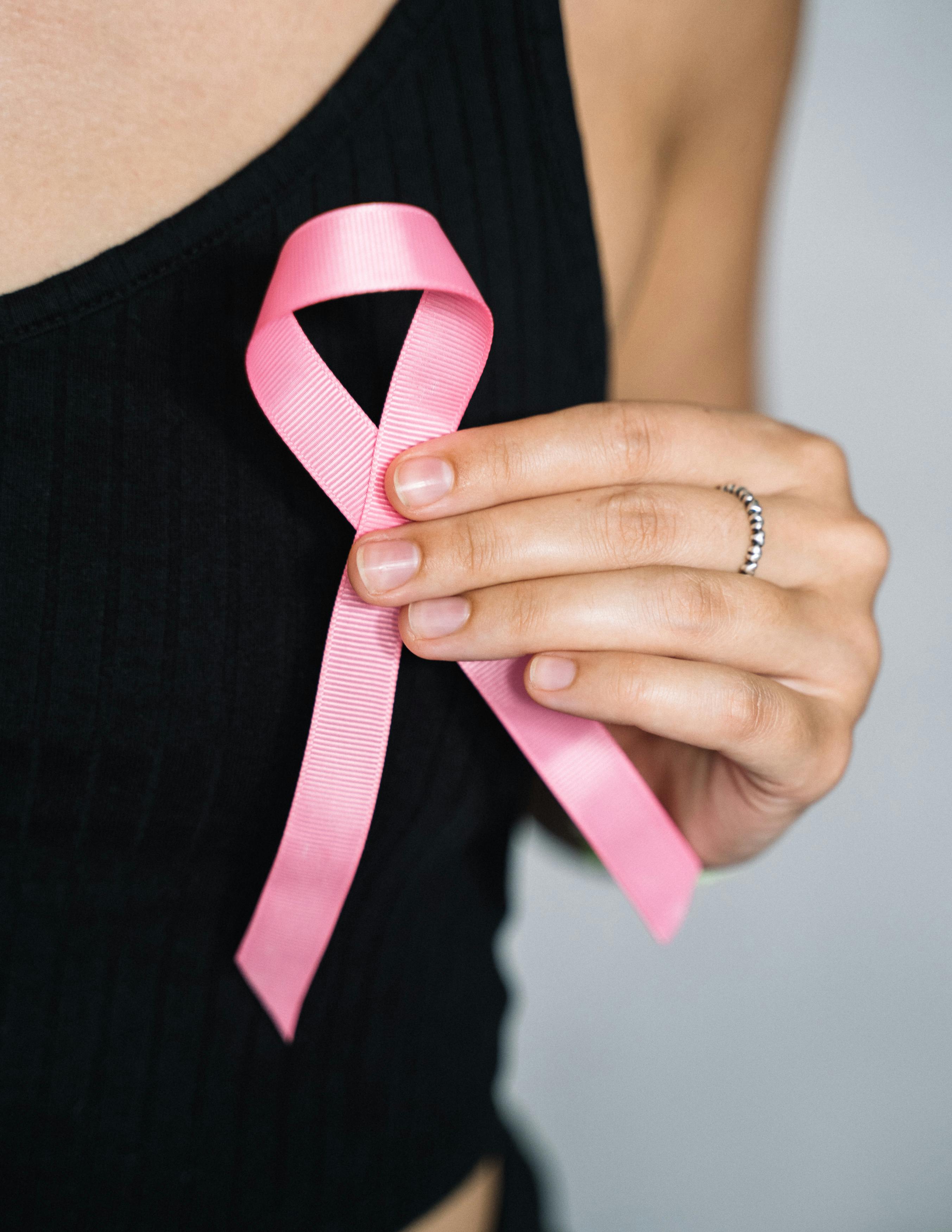Histopathological Grading based on BI-RADS Mammography Category 4 and 5 in Breast Cancer

Downloads
Highlights:
Most breast cancer patients were in the 45-49 years old age group.
There was no difference in the age interval between BI-RADS C-4 and C-5 in breast cancer patients.
- There was no difference in histopathological grading between BI-RADS C-4 and C-5 in breast cancer patients.
Abstract
Introduction: Breast cancer is the most common cancer worldwide. The diagnosis of breast cancer is established by a triple diagnostic, such as clinical examination, radiology (mammography), and histopathology. This study aimed to compare mammography breast imaging-reporting and data system (BI-RADS) category 4 and 5 with histopathological grading of breast cancer at Dr. Soetomo General Academic Hospital, Surabaya.
Methods: This was an observational, descriptive study with a comparative approach, utilizing secondary data from medical records of breast cancer patients at Dr. Soetomo General Hospital, Surabaya, from January 2017 to December 2021. There were 234 samples of patients who met the inclusion criteria. All statistical data were analyzed using the International Business Machines Corporation (IBM) Statistical Package for Social Sciences (SPSS) version 26, with a p<0.05 regarded as statistically significant.
Results: The breast cancer patients were most prevalent in the 45-49 years old age group (20.9%). The highest distribution of the BI-RADS category was C-5 (85.9). The highest distribution of histopathological grading was grade III (53%). There was no difference in age intervals between BI-RADS C-4 and BI-RADS C-5 in breast cancer patients (p=0.499). There was no difference in histopathological grading between BI-RADS C-4 and C-5 in breast cancer patients (p=0.592).
Conclusion: There was no difference either in age interval or histopathological grading between BI-RADS category 4 and 5 in breast cancer patients.
International Agency for Research on Cancer (IARC). Data Visualization Tools for Exploring the Global Cancer Burden in 2022. Geneva, (2020). [Website]
Sung H, Ferlay J, Siegel RL, Laversanne M, Soerjomataram I, Jemal A, et al. Global Cancer Statistics 2020: GLOBOCAN Estimates of Incidence and Mortality Worldwide for 36 Cancers in 185 Countries. CA Cancer J Clin 2021; 71: 209–249. [PubMed]
American Cancer Society. Breast Cancer Facts & Figures 2019-2020. Atlanta, (2019). [Website]
Sarkar T, Chatterjee D, Chowdhury D, Sarkar P. Triple Assessment for the Diagnosis of Carcinoma Breast in a Tertiary Care Hospital of Tripura: A Cross-Sectional Study. J Clin DIAGNOSTIC Res; 16. 1 June 2022. [Journal]
World Health Organization (WHO). The Global Breast Cancer Initiative. Geneva, (2022). [Website]
Euler-Chelpin MV, Lillholm M, Vejborg I, Nielsen M, Lynge E. Sensitivity of Screening Mammography by Density and Texture: A Cohort Study from a Population-Based Screening Program in Denmark. Breast Cancer Res 2019; 21: 111. [PubMed]
National Comprehensive Cancer Network. NCCN Clinical Practice Guidelines in Oncology (NCCN Guidelines) for Breast Cancer Screening and Diagnosis. Philadelphia, (2025). [Website]
Mursyidah NI, Ashariati A, Kusumastuti EH. Comparison of Breast Cancer 3-years Survival Rate Based on the Pathological Stages. JUXTA J Ilm Mhs Kedokt Univ Airlangga 2019; 10: 38–43. [Journal]
Dooijeweert CV, Diest PJV, Ellis IO. Grading of Invasive Breast Carcinoma: The Way Forward. Virchows Arch 2022; 480: 33–43. [PubMed]
Syarti A, Pasaribu U, Fauziah D, Mardiyana L, Wulanhandarini T. Characteristics and Histopathological Grading of Malignant Spiculated Mass in Regards to Histopathological Grading of Breast Cancer Based on the Nottingham Grading System. Biomol Heal Sci J 2020; 3: 33. [Journal]
Kim BK, Ryu JM, Oh SJ, Han J, Choi JE, Jeong J, et al. Comparison of Clinicopathological Characteristics and Prognosis in Breast Cancer Patients with Different Breast Imaging Reporting and Data System Categories. Ann Surg Treat Res 2021; 101: 131–139. [PubMed]
Sturesdotter L, Sandsveden M, Johnson K, Larsson AM, Zackrisson S, Sartor H. Mammographic Tumour Appearance is Related to Clinicopathological Factors and Surrogate Molecular Breast Cancer Subtype. Sci Rep 2020; 10: 20814. [PubMed]
World Health Organization (WHO). Global Breast Cancer Initiative Implementation Framework: Assessing, Strengthening and Scaling Up of Services for the Early Detection and Management of Breast Cancer. Geneva, (2023). [Website]
Centers for Disease Control and Prevention (CDC). U.S. Cancer Statistics Female Breast Cancer Stat Bite. New York, (2025). [Website]
Gates B, Allen P. Excel, (2021). [Website]
Nie NH, Bent DH, Hull CH. Statistical Package for the Social Sciences (SPSS), (2018). [Website]
Wells VA, Medeiros I, Shevtsov A, Fishman MDC, Selland DLG, Dao K, et al. Demystifying Breast Disease Markers. Radiographics 2023; 43: e220151. [PubMed]
Tan KF, Adam F, Hussin H, Mujar NMM. A Comparison of Breast Cancer Survival across Different Age Groups: A Multicentric Database Study in Penang, Malaysia. Epidemiol Health 2021; 43: e2021038. [PubMed]
Xu S, Murtagh S, Han Y, Wan F, Toriola AT. Breast Cancer Incidence among US Women Aged 20 to 49 Years by Race, Stage, and Hormone Receptor Status. JAMA Netw Open 2024; 7: e2353331. [PubMed]
Momenimovahed Z, Salehiniya H. Epidemiological Characteristics of and Risk Factors for Breast Cancer in the World. Breast Cancer (Dove Med Press 2019; 11: 151–164. [PubMed]
Aziz S, Mohamad MA, Zin RRM. Histopathological Correlation of Breast Carcinoma with Breast Imaging-Reporting and Data System. Malays J Med Sci 2022; 29: 65–74. [PubMed]
Mohapatra SK, Das PK, Nayak RB, Mishra A, Nayak B. Diagnostic Accuracy of Mammography in Characterizing Breast Masses Using the 5th Edition of BI-RADS: A Retrospective Study. Cancer Res Stat Treat; 5, (2022). [Journal]
Vangangelt KMH, Green AR, Heemskerk IMF, Cohen D, Pelt GWV, Sobral-Leite M et al. The Prognostic Value of the Tumor-Stroma Ratio is Most Discriminative in Patients with Grade III or Triple-Negative Breast Cancer. Int J Cancer 2020; 146: 2296–2304. [PubMed]
Eiro N, Gonzalez LO, Fraile M, Cid S, Schneider J, Vizoso FJ. Breast Cancer Tumor Stroma: Cellular Components, Phenotypic Heterogeneity, Intercellular Communication, Prognostic Implications and Therapeutic Opportunities. Cancers (Basel); 11. May 2019. [PubMed]
Catteau X, Simon P, Jondet M, Vanhaeverbeek M, Noël JC. Quantification of Stromal Reaction in Breast Carcinoma and Its Correlation with Tumor Grade and Free Progression Survival. PLoS One 2019; 14: e0210263. [PubMed]
Andrianto A, Sudiana IK, Suprabawati DGA, Notobroto HB. Immune System and Tumor Microenvironment in Early-Stage Breast Cancer: Different Mechanisms for Early Recurrence after Mastectomy and Chemotherapy on Ductal and Lobular Types. F1000Research 2023; 12: 841. [PubMed]
Pape R, Spuur KM, Wilkinson JM, Umo P. Correlation of the BI-RADS Assessment Categories of Papua New Guinean Women with Mammographic Parenchymal Patterns, Age and Diagnosis. J Med Radiat Sci 2020; 67: 269–276. [PubMed]
Armando B, Setiawati R, Edward M, Mustokoweni S. Conventional Radiological Profile of Metastatic Bone Disease Based on Its Histopathological Results: A 3-Year Experience. JUXTA J Ilm Mhs Kedokt Univ Airlangga 2023; 14: 76–82. [Journal]
Trisna W, Sahudi S, Kusumastuti E. Correlation between Hormonal Status of Estrogen Receptor and Malignancy Degree of Invasive Ductal Breast Cancer. Maj Biomorfologi 2021; 31: 1. [Journal]
Copyright (c) 2025 Farhan Ubaidillah Ramadhan, Lies Mardiyana, Etty Hary Kusumastuti, Husnul Ghaib

This work is licensed under a Creative Commons Attribution-ShareAlike 4.0 International License.
1. The journal allows the author to hold the copyright of the article without restrictions.
2. The journal allows the author(s) to retain publishing rights without restrictions
3. The formal legal aspect of journal publication accessibility refers to Creative Commons Atribution-Share Alike 4.0 (CC BY-SA).




























